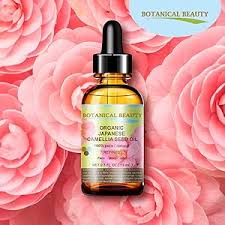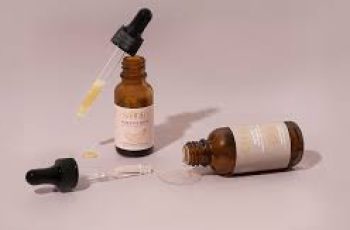
Camellia Japonica Seed Oil in Skincare: Benefits, Uses, and Science
Camellia Japonica Seed Oil, often called Tsubaki oil, is a plant-derived oil with deep roots in traditional East Asian beauty rituals.
It’s now a trending ingredient in modern skincare, especially in Korean anti-aging products.
This lightweight yet deeply moisturizing oil is derived from the seeds of the Camellia japonica plant. The plant is an evergreen shrub or small tree, native to Japan, South Korea, and China.
In recent years, Tsubaki oil has gained attention in global skincare due to its hydrating, antioxidant, anti-inflammatory, and pollution-protecting properties.
What Is Camellia Japonica Seed Oil?
Camellia Japonica Seed Oil is extracted by cold-pressing the seeds of the Camellia japonica plant. This process preserves its natural antioxidants and essential nutrients.
Historically, it was used in Japan and Korea to condition hair and skin. Samurai warriors used it to protect and shine their hair and skin, especially during the cold seasons.
Today, it’s commonly found in serums, moisturizers, face oils, and anti-aging creams.
Why Is It So Popular in Skincare?
Camellia Japonica Seed Oil offers a wide range of skin benefits, making it an excellent choice for:
Sensitive skin, Dry or mature skin, Skin exposed to pollution or UV rays, Inflamed or irritated skin
It’s non-comedogenic, meaning it won’t clog pores, making it safe for oily and acne-prone skin too.
Key Skin Benefits of Camellia Japonica Seed Oil
1. Moisturizes Deeply
The oil is rich in oleic acid (over 80%), which mimics the skin’s natural sebum. It penetrates deeply, helping the skin retain moisture and softness without a greasy feel.
2. Fights Free Radicals
It contains powerful antioxidants like polyphenols, vitamin E, and flavonoids. These help neutralize free radicals that cause premature aging and skin damage.
3. Anti-Inflammatory Properties
Compounds like terpenoids and saponins reduce skin redness and soothe inflammation. This makes it suitable for rosacea, eczema, and sensitive skin conditions.
4. Protects from Environmental Damage
Tsubaki oil forms a barrier on the skin that defends against pollution, UV rays, and cigarette smoke. This is crucial for city dwellers or those frequently exposed to environmental stressors.
5. Supports Collagen Production
Its antioxidants and vitamins A and C help stimulate collagen synthesis, improving skin elasticity and reducing the appearance of wrinkles.
6. Strengthens the Skin Barrier
Camellia oil improves the skin’s protective barrier, reducing water loss and shielding against bacteria and irritants.
Fatty Acid Composition (Approximate)
Camellia Japonica Seed Oil contains a balanced blend of skin-friendly fatty acids:
Oleic Acid (Omega-9): 82% – deeply moisturizing and helps skin absorb nutrients.
Linoleic Acid (Omega-6): 7% – helps balance oil production.
Palmitic Acid: 8% – forms a barrier to lock in moisture.
Stearic Acid: 2% – softens skin and reduces dryness.
Arachidic Acid: 1% – supports skin texture and hydration.
This high oleic acid content makes it particularly effective for aging, dry, or sensitive skin types.
Antioxidant Profile
Tsubaki oil contains a wide range of antioxidants, including:
Vitamins A, C, D, and E – promote cell turnover, repair damage, and reduce UV-related aging.
Polyphenols – fight oxidative stress and protect from pollution.
Flavonoids like quercetin and kaempferol – enhance anti-inflammatory and anti-aging effects.
Rutin – supports blood vessel health and reduces redness.
Together, these antioxidants provide strong protection against oxidative skin damage.
Clinical and Scientific Research
Several scientific studies support the use of Camellia Japonica extracts in skincare:
✔ 2005 (Lee et al.)
Camellia japonica flower and leaf extracts showed strong antioxidant, antifungal, and antibacterial activity, especially against gram-positive bacteria.
✔ 2011 (Piao et al.)
Ethanol extracts from the flower improved the activity of antioxidant enzymes in skin cells. This enhanced defense against reactive oxygen species (ROS).
✔ 2017 (Yoon et al.)
High concentrations of vitamin E and rutin in the leaf extract helped improve antioxidant capacity and reduce inflammation in lab and animal models.
✔ 2019 (Kim et al.)
Camellia japonica flower extract protected skin cells from urban air pollutants, reducing oxidative stress and boosting collagen.
✔ 2018 (Jeon et al.)
Fruit and stem extracts improved wound healing and stem cell generation in mice, suggesting regenerative and protective skin benefits.
Uses in Skin Care Products
You’ll find Camellia Japonica Seed Oil in:
Anti-aging creams – boosts elasticity and smooths fine lines.
Facial oils – for deep hydration and glow.
Serums for sensitive skin – calms redness and strengthens the barrier.
Eye creams – reduces inflammation and puffiness.
Night masks – helps repair and protect while you sleep.
It’s ideal for daily use and layers well under SPF or makeup.
How to Use Camellia Japonica Seed Oil in Your Routine
You can apply it directly to clean skin or mix a few drops into your favorite moisturizer or serum.
Tips:
Apply it on damp skin to lock in moisture more effectively.
Use it after exfoliating to soothe and replenish the skin.
Use at night for skin regeneration or in the morning for environmental protection.
Is Camellia Japonica Seed Oil Safe?
Yes, it’s generally well-tolerated and safe for all skin types. The Environmental Working Group (EWG) gives it a safety score of 1, indicating minimal risk.
Possible Side Effects:
Rare cases of mild irritation in extremely sensitive individuals.
Patch testing is recommended if you have allergy-prone or reactive skin.
Pregnancy:
It is considered safe during pregnancy, but no conclusive safety studies exist for pregnant women. When in doubt, consult your dermatologist.
Compatibility with Other Ingredients
Camellia Japonica Seed Oil is fat-soluble, meaning it blends well with oil-based products.
However, it’s best to avoid pairing it with very low pH products, such as strong vitamin C serums or peels, as this may reduce its efficacy or cause mild irritation.
Compatible ingredients include:
Niacinamide, Hyaluronic acid, Coenzyme Q10, Ceramides, Bakuchiol, Squalane
Camellia Oil vs. Other Plant Oils
Feature Camellia Japonica Oil Rosehip Oil Argan Oil
Main Fatty Acid Oleic (82%) Linoleic (35-55%) Oleic (43-49%)
Texture Lightweight, silky Dry, fast-absorbing Medium-rich
Skin Type All, especially dry/sensitive Oily/acne-prone Dry/aging
Comedogenic? No No Slightly
Camellia oil stands out for its high penetration, light feel, and compatibility with sensitive skin.
Conclusion
Camellia Japonica Seed Oil is a standout botanical oil in modern skincare. Rich in oleic acid, antioxidants, and soothing compounds, it hydrates, protects, and nourishes the skin without clogging pores.
It’s especially helpful for:
Dry or dehydrated skin
Sensitive or inflamed skin
Pollution-exposed or urban lifestyles
Anti-aging routines needing antioxidant support
If you’re looking for a gentle yet powerful ingredient to add to your skincare, Camellia Japonica Seed Oil is a beautiful and effective choice.


